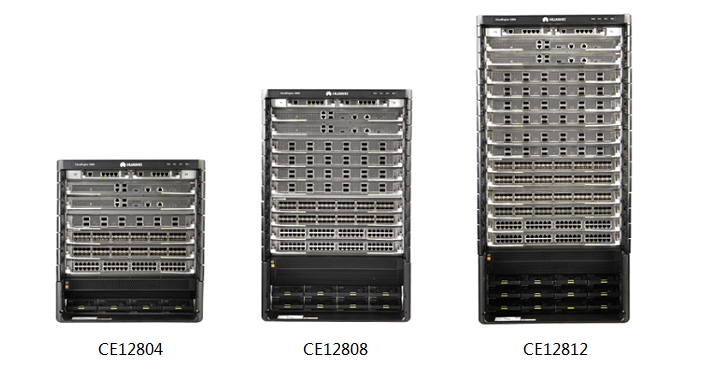Switch de centro de datos CloudEngine 12800
Los switch de la serie CloudEngine 12800 (CE12800) son switch core de próxima generación y de alto rendimiento, diseñados para redes de centros de datos y redes de área de campus de alta gama. Con el uso de la plataforma de software VRP8 de próxima generación de Huawei, los switch de la serie CE12800 proporcionan capacidades de conmutación de capa 2 y de capa 3 estables, confiables, seguras y de alto rendimiento, que permiten construir una red elástica, virtualizada y de alta calidad.
Los switch de la serie CE12800 adoptan un diseño avanzado de arquitectura de hardware y tienen el rendimiento más alto de todos los switch core disponibles en la actualidad. La serie CE12800 posee una capacidad de conmutación de hasta 48 Tbit/s y puertos de velocidad de línea de alta densidad. Cada switch cuenta con un máximo de 288 puertos de 40 GE o 1152 puertos de 10 GE.
Los switch de la serie CE12800 utilizan una arquitectura CLOS líder en la industria y ofrecen capacidades completas de virtualización, junto con las características de servicio de centros de datos. Por otra parte, los switch CE12800 utilizan tecnologías innovadoras de ahorro de energía para reducir en gran medida el consumo de energía. Además, tienen un diseño de canales de ventilación de adelante hacia atrás para proporcionar una confiabilidad de nivel industrial.
Los switch CE12800 están disponibles en tres modelos: CE12812, CE12808 y CE12804. La serie CE12800 adopta componentes intercambiables para disminuir gastos de repuestos. Este diseño permite garantizar la escalabilidad de los dispositivos y protege las inversiones de los clientes.



